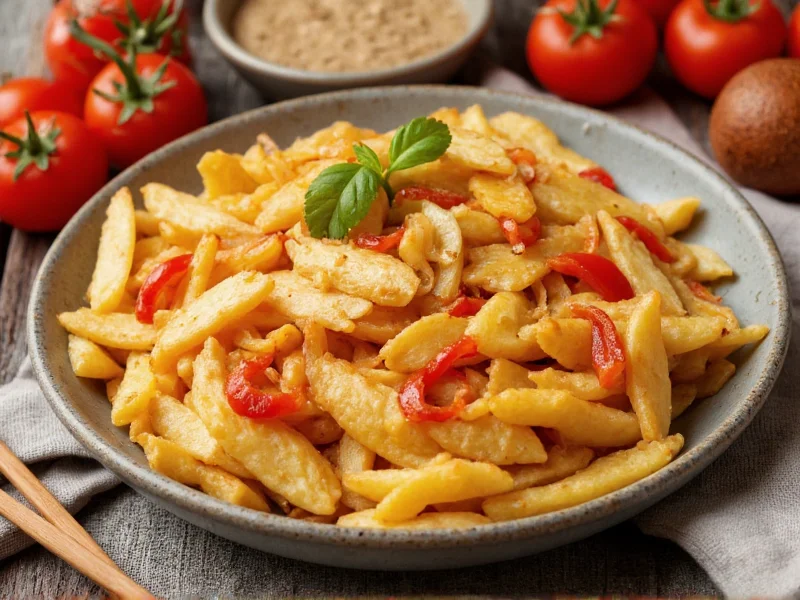Monosodium glutamate (MSG) has been a controversial flavor enhancer for decades. Whether you're avoiding it due to health concerns, dietary restrictions, or personal preference, numerous natural alternatives can deliver that savory umami taste you're seeking. Understanding these healthy alternatives to monosodium glutamate helps maintain flavor complexity in your cooking without processed ingredients.
Why People Seek MSG Substitutes
Many home cooks and professional chefs look for what can I use instead of msg for various reasons. Some report sensitivity to MSG, though scientific evidence of widespread adverse reactions remains limited. Others prefer whole food ingredients over processed additives. Cultural cooking traditions often incorporate natural umami sources that function as excellent msg-free flavor enhancers without compromising taste.
Natural Umami Powerhouses
These ingredients contain naturally occurring glutamates that provide depth and savoriness similar to MSG:
| Ingredient | Best For | Substitution Ratio | Special Notes |
|---|---|---|---|
| Dried Shiitake Mushrooms | Asian dishes, soups, sauces | 2-3 mushrooms = 1 tsp MSG | Grind to powder or use in broth |
| Kombu Seaweed | Broths, stews, vegetarian dishes | 4" piece = 1 tsp MSG | Add during cooking, remove before serving |
| Tomato Paste | Italian, Mediterranean dishes | 1-2 tbsp = 1 tsp MSG | Cook to deepen flavor |
| Parmaesan Cheese Rind | Italian soups, sauces | 2" piece = 1 tsp MSG | Add to simmering liquids |
| Soy Sauce/Tamari | Asian cuisine, marinades | 1 tbsp = 1 tsp MSG | Reduce other salt in recipe |
How to Use These Substitutes Effectively
Understanding how to replace msg in recipes requires attention to cooking techniques. For soups and stews, add kombu or Parmesan rind early in the cooking process. In sauces, sauté mushrooms before adding other ingredients to maximize flavor extraction. When using soy sauce or fish sauce, remember they contain salt, so adjust your recipe's sodium content accordingly.
For dry rubs and spice blends where MSG powder would typically be used, create your own umami powder by grinding dried mushrooms with nutritional yeast and a small amount of seaweed. This homemade msg replacement works particularly well for seasoning meats before grilling or roasting.
Special Dietary Considerations
Those following specific diets need tailored solutions. For gluten-free msg alternatives, tamari (gluten-free soy sauce), fish sauce, and pure mushroom powder work well. Vegetarians and vegans can rely on seaweed, mushrooms, tomato products, and nutritional yeast as excellent vegetarian substitutes for msg.
When cooking Asian-inspired dishes where MSG commonly appears, consider the traditional approach: many authentic recipes never used MSG at all, instead relying on natural umami sources like fermented bean pastes, dried seafood, and properly aged ingredients to develop complex flavors.
Creating Balanced Flavor Profiles
The key to successful substitution isn't just replacing MSG measure for measure, but understanding how to build layered flavors. Combine multiple umami sources for best results—try adding both tomato paste and mushrooms to a meat sauce, or use kombu broth with a splash of soy sauce in vegetable dishes. This approach creates the best msg substitute for chinese food and other cuisines where MSG traditionally appears.
Remember that patience matters when developing natural flavors. Unlike MSG which delivers instant umami, natural substitutes often require proper cooking techniques and time for flavors to develop. Simmer broths longer, sauté vegetables thoroughly, and allow time for flavors to meld for the most satisfying results.
Frequently Asked Questions
What's the closest natural substitute for MSG?
Dried shiitake mushrooms provide the most direct umami replacement. When ground into powder, they deliver concentrated glutamates similar to MSG without additives. Use approximately 2-3 dried mushrooms per teaspoon of MSG called for in your recipe.
Can I make my own MSG substitute at home?
Yes, you can create an effective homemade blend by combining equal parts dried mushroom powder, nutritional yeast, and finely ground kombu seaweed. Store in an airtight container for up to three months. Use 1 teaspoon of this blend to replace 1 teaspoon of MSG in recipes.
Does soy sauce work as a good MSG replacement?
Soy sauce makes an excellent MSG substitute in many applications, particularly Asian dishes. Use 1 tablespoon of soy sauce to replace 1 teaspoon of MSG, but reduce other salt in your recipe since soy sauce contains sodium. For gluten-free needs, use tamari instead.
Why do some recipes call for MSG if these natural alternatives exist?
MSG provides consistent, concentrated umami without altering other flavor elements. In commercial food production, it's cost-effective and shelf-stable. Home cooks often prefer natural alternatives because they add additional flavor dimensions beyond just umami and come from whole food sources.
How do I adjust recipes when substituting MSG with natural alternatives?
When replacing MSG, consider both flavor and liquid content. For dry substitutes like mushroom powder, use equal volume. For liquid substitutes like soy sauce, reduce other liquids slightly. Always taste as you cook and allow extra time for flavors to develop, as natural umami sources work more gradually than MSG.











 浙公网安备
33010002000092号
浙公网安备
33010002000092号 浙B2-20120091-4
浙B2-20120091-4